At first, I didn’t think I would like State of Decay 2.
If you’ve spent any time around here at all, you know the depths of my obsession with the original State of Decay. I put in hundreds of hours, most spent in the Breakdown DLC, building and rebuilding my little patch of Trumbull Valley, my fortunes rising and falling with whatever motley group of survivors I could put together. I never cared much about advancing to the top levels (at least, not after an early release glitch wiped my score after I’d reached the top leaderboard); for me, the thrill of survival was building and training a team, keeping them alive, healthy, and mentally stable. The game was about fighting to survive in an increasingly barren landscape, and if it was the same landscape, well, I didn’t care very much. There was something to that, too—the ennui of struggle, of always surviving and never quite thriving.
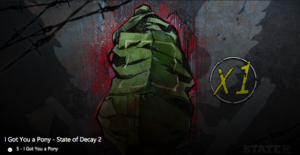 At first glimpse, State of Decay 2 is both very similar and very… not. In the tutorial, players choose a pair of survivors to follow. I selected the on-again (maybe?) lesbian couple whose tumultuous relationship was surviving the apocalypse (sort of), and selected, when asked, a town in a landscape marked by plateaus. I was led to a base on a hilltop without much nearby. Combat was familiar enough, but in some places, the controls were odd, different enough to frustrate my muscle memory of the first game. Early on, my inability to quickly figure out how to drop a rucksack almost got me killed. I felt adrift without the voice of Lily Ritter on the radio, though when I unlocked an achievement named for one of her iconic (and eventually irritating) lines, I felt a little more at home, if only for a moment. The game at first was just unsettling in its existence, adjacent to the first game, but strangely rudderless. Narrative progress came in drips and drabs. I felt disconnected. I didn’t really have a sense of anyone, except that Rachel was always cranky and Gabi wanted to be an action hero. (Note: Lily turns up later, though I won’t spoil how, but I am uncertain if it’s still Lauren Stone voicing the character. I don’t think so but was unable to verify.)
At first glimpse, State of Decay 2 is both very similar and very… not. In the tutorial, players choose a pair of survivors to follow. I selected the on-again (maybe?) lesbian couple whose tumultuous relationship was surviving the apocalypse (sort of), and selected, when asked, a town in a landscape marked by plateaus. I was led to a base on a hilltop without much nearby. Combat was familiar enough, but in some places, the controls were odd, different enough to frustrate my muscle memory of the first game. Early on, my inability to quickly figure out how to drop a rucksack almost got me killed. I felt adrift without the voice of Lily Ritter on the radio, though when I unlocked an achievement named for one of her iconic (and eventually irritating) lines, I felt a little more at home, if only for a moment. The game at first was just unsettling in its existence, adjacent to the first game, but strangely rudderless. Narrative progress came in drips and drabs. I felt disconnected. I didn’t really have a sense of anyone, except that Rachel was always cranky and Gabi wanted to be an action hero. (Note: Lily turns up later, though I won’t spoil how, but I am uncertain if it’s still Lauren Stone voicing the character. I don’t think so but was unable to verify.)
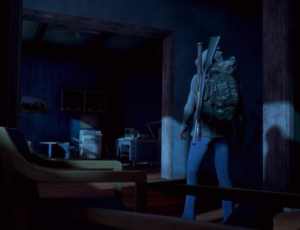 Cars were scarce; fuel too. Everything was so far away. Driving on a single mission or supply search seemed to take an entire tank of gas. I got so frustrated at one point that I told my partner I wasn’t going to play it, I hated it, there was nothing here for me. Of course, he knows me better than I know myself at times, and he wisely suggested I start again and try without the tutorial. After the tutorial, you can build a team. My first effort put me in the same area, so I restarted and tried again, ending up in the Meagher Valley. And there I fell in love with everything the new game has to offer. Buildings were closer, cars were present, though not quite abundant, and I learned the peculiar joy of leaping onto the back of a juggernaut and riding it to its death. I found a hatchback that felt like it could ride forever on a single can of gas and drove back and forth at speed through Turtle Ridge and Squelones, scavenging, networking, building. I found all the ways this game has improved on the game I so loved and learned to live with the little things I’d missed. In Squelones, I found what I wanted: a team that fit together, who mattered to each other and to me. Meghan, Kelly, Carl, Proud, Jessica, Dion; they were just random survivors I’d rolled, but they had little stories and desires, and they talked to each other. When things got sad, Kelly started scrounging materials for a favorite dessert, in hopes of cheering up the community. When we moved into the brewery, Dion gained a morale boost from the lingering smell of hops. Proud’s cheerful greeting to the crew rang out every time she returned from scrounging. Carl shifted from alpha male into caring leader eagerly planning for a real future. I cared about them, and they cared about each other.
Cars were scarce; fuel too. Everything was so far away. Driving on a single mission or supply search seemed to take an entire tank of gas. I got so frustrated at one point that I told my partner I wasn’t going to play it, I hated it, there was nothing here for me. Of course, he knows me better than I know myself at times, and he wisely suggested I start again and try without the tutorial. After the tutorial, you can build a team. My first effort put me in the same area, so I restarted and tried again, ending up in the Meagher Valley. And there I fell in love with everything the new game has to offer. Buildings were closer, cars were present, though not quite abundant, and I learned the peculiar joy of leaping onto the back of a juggernaut and riding it to its death. I found a hatchback that felt like it could ride forever on a single can of gas and drove back and forth at speed through Turtle Ridge and Squelones, scavenging, networking, building. I found all the ways this game has improved on the game I so loved and learned to live with the little things I’d missed. In Squelones, I found what I wanted: a team that fit together, who mattered to each other and to me. Meghan, Kelly, Carl, Proud, Jessica, Dion; they were just random survivors I’d rolled, but they had little stories and desires, and they talked to each other. When things got sad, Kelly started scrounging materials for a favorite dessert, in hopes of cheering up the community. When we moved into the brewery, Dion gained a morale boost from the lingering smell of hops. Proud’s cheerful greeting to the crew rang out every time she returned from scrounging. Carl shifted from alpha male into caring leader eagerly planning for a real future. I cared about them, and they cared about each other.
And, to my delight, the narrative unfolding over the radio didn’t start over. When I started a new game, the story continued; things that had already happened had, well, happened, and remote survivors were dealing with the fallout of those actions. I don’t know where the “story” will end, but I’ll be building and weaving my stories around that master narrative in a way that feels very real. It’s a small detail, but a much-needed hint of something larger, a story beyond my struggle with the blood plague on the streets of Squelones. The radio narrative represents the hope of something beyond mere survival.
Restarting clued me in on what I would quickly come to like most about this game: in the sequel, Undead Labs turned Breakdown into the whole game, but instead of accepting and unlocking their heroes, here we are asked to forge our own, to unlock legacy characters who can build anew in future games. As much as I loved Sam and Marcus, or Breakdown-only favorites like Amelia, here I will watch heroes arise, heroes whose struggles I’ve witnessed. For me, that may never get old. I look forward to returning to that hilly map later, with my team of marathon-running survivors who won’t even need cars, only the power of their own well-oiled meat machines, churning across the map in sneakers. Take that, car-less map.
SoD2 is hard. Make no mistake. Don’t be lulled by the seeming wealth of supplies or the relative difference in effort required to kill a feral. Infestations can be brutal, with undead hordes pouring out of nearby buildings if you don’t take down the screamers quickly enough. You can get help finding supplies, but things go missing, get spoiled, run out quickly, and if you like to stay prepared, scavenging (or making) what you need takes time and effort. Allied enclaves will leave the area or turn hostile if you don’t respond with speed to their requests; followers can die, turn, and attack (when this happened to me, during an early quest, I was so shocked I nearly dropped my controller). Hostile humans will try to kill you. That one surprised me the first time. I lived, but my hands functioned on autopilot, pressing the buttons to fight as I watched, rather disembodied. What a world we must survive in, I marveled; what a world this must be if the few surviving humans will go on trying to kill each other.
A few highlights:
-
- As above, I was not expecting an enclave to turn on me and try to kill me, but the first time it happened, in my first game, I thought it was because I’d let my companion, from a different enclave, die; during the commotion, someone said, “She killed Mark!” I hadn’t, but he’d died on my watch. Later, when I replayed that quest with my second group, I realized they’d always turn on you, always go hostile, but that first time, I was shook – I thought they attacked me because they thought I was a murderer. It was an intense moment.
- Friendly enclaves are needy, but one in particular that I’m trying to please is a set of mechanics I call the Man Babies. That isn’t the name of the enclave, but they are so intrusive, calling once a game-day or more to ask for food, medicine, a gun, help doing something. I’ve had to put off clearing infestations and wiping out plague hearts (giant, throbbing infected masses of grody disease that creates uber-zeds) just to run some crackers across town to the Man Babies because they cannot be bothered, I guess, to do anything beyond working on cars. I like these guys and they bring me cars if I need them, but for shit’s sake, men, scavenge the houses around your own base. You can do it. I believe in you.
- I thought the cars were much tougher than cars in the first game until I accidentally sailed my car into what I thought was a breakable fence. It was not breakable and despite being relatively undamaged, the car erupted into an instant fireball and shot me across the yard. RIP little blue car. I’ll fix you when I have an extra toolkit lying around.
- The first time a juggernaut surprised me by appearing in an event, I hollered in my living room. I was out of stamina and if the people around me died, there’d be problems, but it worked out somehow, magically; we killed him and just as I turned around to celebrate, a second one appeared. That was not a good time. (We lived. It was rough. Everyone was broken. I had to pause the game and take a walk.)
- I finally found someone with the skill I needed to upgrade my command center, so I recruited him and drove him back to base, only to find a juggernaut (it’s always juggernauts) attacking at the side gate where I usually park. I leaped out and sprinted across the compound to get a machine gun out of the supply locker and ran back outside just in time to see my new guy, a member of the team for approximately 25 seconds, get torn apart. Nice guts, Colin. We truly hardly knew you.
- I love my people. I mean, I love them. I exiled some people in my first game (that’s such a great addition, by the way; now I don’t have to take people out and let them die, which was horrifying), but this team, in my second play, is amazing and I learned you can get past some personality issues and conflicts with a good base. I need everyone to live and “win” and survive and I will be crushed if anyone dies. It’s amazing to me how this randomly rolled set of characters became people to me so quickly, but here we are – and that’s always been part of the magic of State of Decay for me.
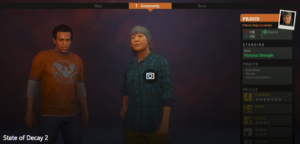 I don’t yet know where this story will end, or if it will, but for my team, newly established in a larger base, some things are only just beginning. For some, I suppose, the sheer act of survival can grow tedious, but for me, the constant struggle to live in a hostile world, to keep everyone happy and functional, was always enough. But here, with the sequel’s additions and the ways the various maps shape play, I’m sure I’ll be spending another summer struggling from house to house, sneaking past juggernauts and ferals, hoping to just go on surviving – but we’ll see how late game treats me, and whether or not the difficulty ramps up.
I don’t yet know where this story will end, or if it will, but for my team, newly established in a larger base, some things are only just beginning. For some, I suppose, the sheer act of survival can grow tedious, but for me, the constant struggle to live in a hostile world, to keep everyone happy and functional, was always enough. But here, with the sequel’s additions and the ways the various maps shape play, I’m sure I’ll be spending another summer struggling from house to house, sneaking past juggernauts and ferals, hoping to just go on surviving – but we’ll see how late game treats me, and whether or not the difficulty ramps up.
The above impressions are based on a preview copy provided by Microsoft, and may not reflect a final build, which for chrissakes should use a different button for refueling and entering the car because do you know how many times I accidentally entered my little hatchback instead of refueling it oh my god I swore so many times about this.
State of Decay 2 (Undead Labs, Ultimate Edition $49.99, Standard Edition $29.99 USD)
You can reach Alisha at her website.

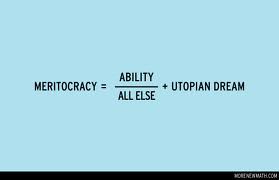
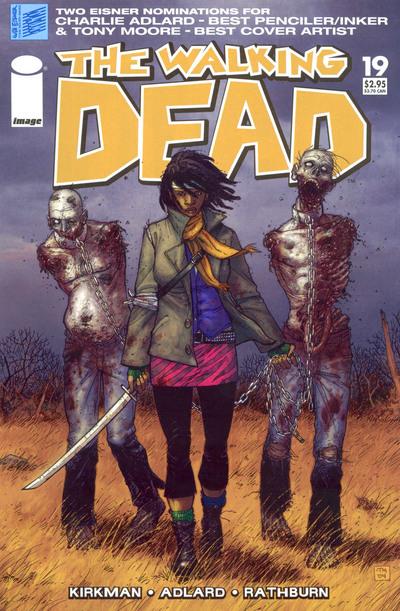
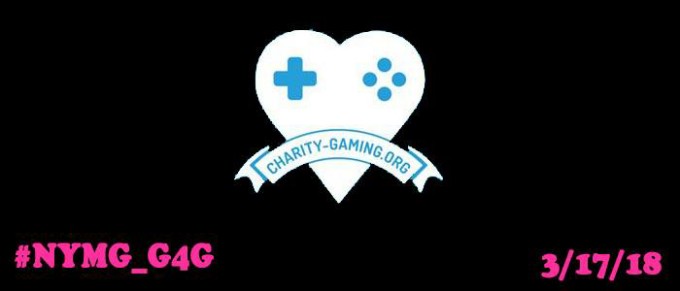
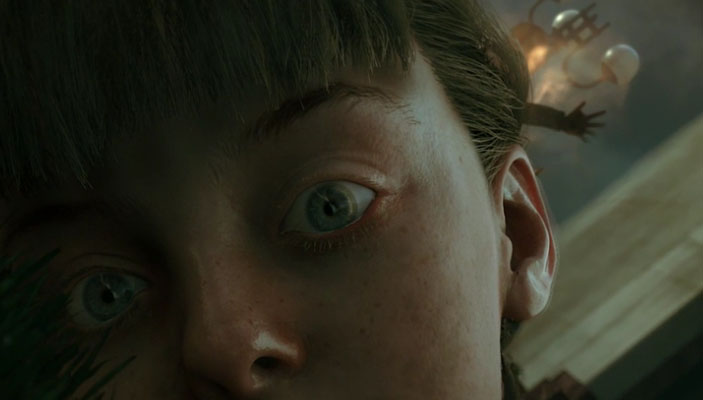
2 thoughts on “State of Decay 2 Preview: A Life in Squelones”
Even though I didn’t play it as much (lots of real life interference) I really loved the first State of Decay as it brought to mind how living in a zombie infested world would be like, and from the gameplay I’ve seen of this new one, I was interested.
Your review cinched it for me, and I am definitely getting this game. This feels and sounds like they did a lot of good improvements over the last game, and I really want to lose myself in a nice, open world like this.
I’ve certainly been playing the heck out of it – “lose myself” is a good descriptor. Because there are always new goals, there’s always a reason to keep going, and this one at least will be a little friendlier to intermittent play if that ends up being an issue.